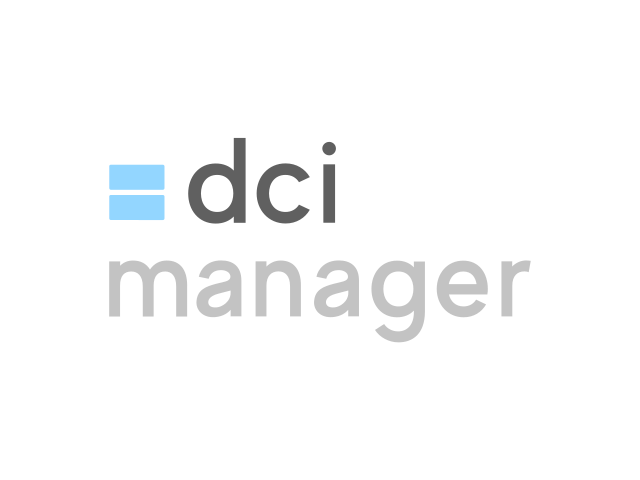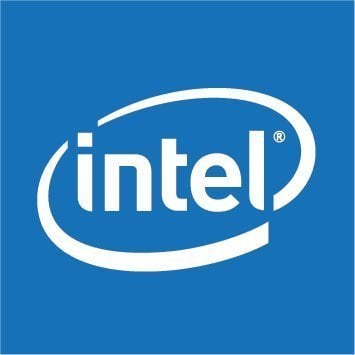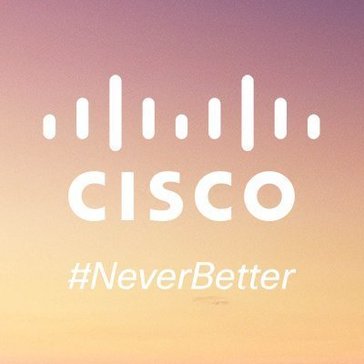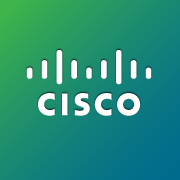Today’s Data Center Infrastructure Management (DCIM) Softwares are incredibly versatile, and because of strong competition, have remained a relatively low-cost investment for most.
Currently, with dozens of options available for Data Center Infrastructure Management (DCIM) Software in the market – finding the right Data Center Infrastructure Management (DCIM) Software of 2024 can be tricky.
So we spent dozens of hours researching and testing everyone we could get my hands on.
Based on our experience with the apps, here are 10 Best Data Center Infrastructure Management (DCIM) Software. Click on any app to learn more about why we chose it, or keep reading for more context on Data Center Infrastructure Management (DCIM) Software.
On this page, you’ll learn about the following:
What is Data Center Infrastructure Management (DCIM) Software?
Infrastructure management for data centers The components of a data center are managed, organized, and monitored using DCIM software. Asset management, performance monitoring, and hardware repair are just a few of the applications for these products. Data management and documentation for information about a data center are another important aspect of DCIM technology. Companies use DCIM technologies to improve the performance of their data center infrastructure. DCIM solutions can also help computers run more effectively while increasing uptime and availability. These technologies may work with data center networking solutions, but they’re more focused on onsite infrastructure management than data center connectivity. A product must allow users to manage and monitor data center assets in order to be included in the Data Center Infrastructure Management DCIM category. Identify data center optimization methods. Allow for the most uptime and availability possible.
Read More
10 Best Data Center Infrastructure Management (DCIM) Software
778 visited this site today
Microsoft System Center helps customers realize the benefits of the Microsoft Cloud Platform by delivering unified management. Experience fast time-to-value with out-of-the-box monitoring, provisioning, configuration, automation, protection and self-service.
Read More
VMware VirtualCenter is a virtual infrastructure management software, that provides a central point of control for virtual computing resources..
Read More
Self-managed Atlassian products built for teams, optimized for scale.
Read More
DClmanager facilitates the deployment and management of your dedicated servers and data center infrastructure, reduces setup and operational costs, decreases downtime while providing enhanced functionality to your clients and customers. DCImanager shortens the time to configure and manage the equipment: automatically installs the OS on the server, performs its diagnostics, changes the speed and mode of the switch ports, manages PDU and much more. Combines tools for equipment monitoring, maintenance and management. Instead of multiple disparate services, one panel can be used. This software allows you to control all existing equipment from one panel and divide it into logical parts – data centers or, for example, rooms. .
Read More
Device42 is the most comprehensive agentless discovery and dependency mapping platform for hybrid IT available today. It provides insights to optimize infrastructure and applications across data centers and cloud with a single source or truth for your entire IT ecosystem. Device42 gives users detailed insights into even the most complex IT enterprises across a broad range of physical, virtual, cloud, and storage infrastructure including network switching, bare metal servers, chassis and blades, hypervisors, IP subnets, and more. Device42’s 1,000+ customers and 200+ partners in over 60 countries run their IT operations more efficiently and solve problems quickly, meet compliance mandates 24/7 and are able to migrate and modernize with the lowest level of risk to the business. Start your free trial today and see what Device42 can do for you at: https://www.device42.com/download/ To lean more, contact us at [email protected] or visit www.device42.com .
Read More
Intel® Data Center Manager (Intel® DCM) is a software solution that collects and analyzes the real-time health, power, and thermals of a variety of devices in data centers helping you improve the efficiency and uptime..
Read More
openDCIM, a free, web based Data Center Infrastructure Management application. DCIM means many different things to many different people, and there is a multitude of commercial applications available. openDCIM does not contend to be a function by function replacement for commercial applications. Instead, openDCIM covers the majority of features needed by the developers – as is often the case of open source software. The software is released under the GPL v3 license, so you are welcome to take it, modify it, and share it with others, as long as you acknowledge where it came from .
Read More
Application Centric Infrastructure (ACI) simplifies, optimizes, and accelerates the application deployment lifecycle in next-generation data centers and clouds..
Read More
ManageEngine OpManager is an integrated network management solution that facilitates efficient and hassle-free network management. It empowers network/IT admins to simultaneously perform multiple operations such as Network performance monitoring, Bandwidth analysis, Configuration management, Firewall management, Storage Monitoring, IP Address Management (IPAM) and Switch Port management (SPM). The entire network infrastructure of an organization can be viewed from a highly custom dashboard on OpManager. Automated workflows, intelligent alerting engines, configurable discovery rules, and intuitive dashboards you to keep your network up and running 24/7. With OpManager’s many contextual integrations with other tools, many organization specific Network administration tasks can be streamlined easily. OpManager’s competitive feature advantage User-Friendly: OpManager with its user-friendly GUI, makes network monitoring simple and easy, complete with intuitive dials and graphs that are also configurable to suit your needs. No Third Party Code: OpManager along with its modules are built from ground up by Manage Engine engineers. 24×5 Technical Support: OpManager offers 24×5 technical support, making it easier for customers to gain maximum utilization of the product. Virtualization Support: OpManager provides extensive built-in virtual server and device monitoring capabilities to provide maximum support in terms of monitoring your IT network. DPI (Deep Packet Inspection) Support: OpManager offers Deep Packet Inspection (DPI), the most accurate technique to monitor the application traffic, analyze application delivery problems and regulate traffic flows to the best suitable way. Discovery Rule Engine: The Discovery Rule Engine speeds up your device configuration by 10X, letting you automate actions such as associating monitors to devices, adding devices to a business view, etc., during device discovery. Storage Monitoring: OpManager provides real-time monitoring and management of network storage devices such as RAIDs and TapeLibraries. It also provides capabilities to manage the Fiber Channel (FC) Switches that are used in storage networks. Workflow Support: First level troubleshooting steps and repetitive laborious maintenance tasks can now be orchestrated and automated through powerful IT workflow automation engine. OpManager offers workflow support which can be used to: Automatically stop/restart a service or a process. Shutdown/restart/suspend a VM. Execute scripts and verify its output. Backup network configuration automatically. Detect the last changes done on a network device. Mobile application: The OpManager app sends you push notifications when a significant event occurs or if there’s activity within your network that requires a network administrator to perform an action. Capacity forecasting and planning: With storage and utilization capacity forecasting feature for CPU, memory and disks in OpManager, IT infrastructure monitoring can be highly improved. Training and Demo: Free, comprehensive training sessions, live webinars and demos are provided from time to time to help users get a better understanding of OpManager’s features and improvements. .
Read More
Designed to help you efficiently implement and manage virtualized data centers. It includes a feature-rich, customizable dashboard that provides visibility and control through a single pane of glass to Cisco Nexus and MDS products..
Read More
What is the Best Data Center Infrastructure Management (DCIM) Software?
Here are our top picks for the Best Data Center Infrastructure Management (DCIM) Software to try this year.
How to Choose Best Data Center Infrastructure Management (DCIM) Software?
Before choosing a data center management software, it is essential to understand what its purpose is and what its features are. It should be able to manage the overall infrastructure and minimize cost. A good data center management software should allow you to monitor performance and create custom dashboards. Additionally, it should be easy to use, with a user-friendly interface that is accessible from any device. It should also offer reporting capabilities and support for GIS.
The right data center infrastructure management software will automate processes, improve uptime, and maximize efficiency. The ability to manage a variety of systems simultaneously is critical to the success of any organization’s business. Its features include process assurance, automated workflow, and fully integrated workflow management. It will also automate tasks and ensure that energy-efficiency initiatives are implemented. To choose the best data center management software, consider the following factors.
DCIM can help you monitor all components of a data center. The Nagios monitoring software is an open source and community-driven monitoring and alerting platform that is widely used. There are nearly 4000 third-party plugins available, which add extra intelligence to the software. It can monitor single points of failure, identify SLA faults, and document changes to the hardware. It can also be customized to provide graphical representations of the room and infrastructure.
A data center management software can help you allocate space and implement new equipment. It can manage the relationship between critical infrastructure and IT equipment. It also helps to manage the relationship between critical infrastructure and IT equipment and can provide fully integrated and automated workflow management. Furthermore, it can help you manage your energy-efficiency initiatives. This is another crucial benefit of a good DCIM. The software can help you to allocate space for new equipment, reduce your costs, and improve employee productivity.
An open system will allow integration with other applications and services. Hence, a DCIM software should be compatible with third-party solutions. It is also important to choose a system that supports third-party APIs and is easily customizable. In addition to these features, DCIM software should be easy to install and use. If you’re unsure, try a trial version first. By testing the software, you will have an idea of how the software works and whether it will fit your needs.
The best DCIM software should be easy to implement. It should be able to improve the visibility of your data center and employee productivity. It should also be able to provide an alert when thresholds are exceeded. It should also provide a centralized view of all your data centers and its components. It should be easy to integrate with other third-party systems, reducing downtime and power consumption. It should be easy to use and has advanced security capabilities.
When choosing a DCIM software, make sure to consider the features it offers. It should be compatible with all of your other systems. If the DCIM software does not, it is best to use a third-party system. Its capabilities should be able to help you manage your network. A DCIM software that supports integration with other systems will help you avoid conflicts and optimize your data center. It should also offer a trial period, so you can try the software out before buying.
When choosing a DCIM software, you should consider the features and capabilities. A DCIM software should offer a wide range of functions. The best DCIM software should also provide a comprehensive management solution. A good DCIM software should also be compatible with multiple servers. It should also be flexible enough to integrate with other functionalities. It should allow you to use multiple tools and data center management systems, including a remote monitoring tool.
While a data center management software is a vital component of your IT infrastructure, it is not an alternative to the help of a professional. It is designed to help administrators monitor and manage their data center efficiently, maximizing uptime and minimizing costs. It also helps you collaborate with different departments and reduce errors. If you’re looking for a solution that can manage all of your data center, then you should consider the options of DCIM.
Read More
FAQ’s
Data center infrastructure management (DCIM) software is a system for managing the data center. It can be used to manage the data center’s physical and virtual resources, monitor the data center’s performance, and visualize the data center’s infrastructure. DCIM software is a key component of the data center.
Data centers are a huge investment. In fact, they can represent up to 50% of a company’s total IT budget. But the cost of a data center can be prohibitive. Data centers require a lot of equipment and hardware to operate. And, they are expensive to maintain.
In the DCIM software industry, there are many challenges that arise due to the rapid pace at which technology is evolving. One of the challenges is that the software is difficult to learn.
DCIM software is a great way to manage the ever-growing number of data centers. It can help you keep track of all the data centers, as well as the cooling systems and power systems.
DCIM software can help data centers to manage their infrastructure. It can help to optimize cooling, power and other critical infrastructure components. It can also help to monitor and manage the environment.
DCIM software is a valuable tool for data center managers, but it can be difficult to use. It is important to understand the software before diving in.DCIM software is designed to simplify the management of data center infrastructure.
I know you want to use Data Center Infrastructure Management (DCIM) Software, thus we made this list of best Data Center Infrastructure Management (DCIM) Software. We also wrote about how to learn Data Center Infrastructure Management (DCIM) Software and how to install Data Center Infrastructure Management (DCIM) Software. Recently we wrote how to uninstall Data Center Infrastructure Management (DCIM) Software for newbie users. Don’t forgot to check latest Data Center Infrastructure Management (DCIM) statistics of 2024.
One of the greatest advantages of DCIM software lies in its ability to provide comprehensive visibility into the various layers of a data center’s infrastructure. This encompasses everything from high-level representations of the entire data center down to the individual components. Operators can easily keep track of the physical layout, connectivity, power usage, cooling requirements, and maintenance schedules for every piece of equipment. This holistic view allows for proactive decision-making, accurate capacity planning, and efficient resource allocation to ensure optimal performance and utilization.
Additionally, DCIM software offers advanced monitoring and alerting capabilities that empower operators to closely monitor performance metrics, detect potential issues, and prevent failures before they occur. From tracking temperature and humidity levels to monitoring power consumption and network connectivity, these tools provide real-time data and actionable insights. By quickly identifying and addressing problems, data center operators can avoid unplanned downtime, improve efficiency, and reduce costs associated with reactive maintenance.
Furthermore, in the face of rising energy costs and environmental concerns, DCIM software plays a pivotal role in promoting sustainability. It enables operators to identify areas where energy consumption can be optimized and implement energy-efficient measures. By monitoring power usage effectiveness (PUE) and taking steps to reduce it, data centers can minimize their carbon footprint, cut down on operating costs, and showcase their commitment to environmentally responsible practices.
Another advantage of DCIM software is its ability to streamline communication and collaboration between different teams involved in data center operations. With multiple stakeholders, such as IT, facilities, and security personnel, all relying on accurate and up-to-date information, sharing data seamlessly is essential. DCIM software acts as a central repository, eliminating silos and enabling efficient collaboration and decision-making across various domains. This cohesive approach ensures that everyone has access to the information they need, facilitating smoother operations and better outcomes.
To summarize, in the dynamic landscape of data center operations, DCIM software has emerged as a critical tool for effective management. By providing comprehensive visibility, proactive monitoring, energy optimization, and seamless collaboration, it enables data centers to follow best practices, overcome challenges, and deliver reliable services. In today’s fast-paced digital world, where downtime can be devastating and managing data growth is paramount, it is clear that DCIM software is not just important but absolutely essential.
Why Data Center Infrastructure Management Software Are So Important
DCIM software is designed to help organizations effectively manage their data center infrastructure by providing detailed visibility into all aspects of the facility, including power usage, cooling efficiency, asset tracking, and capacity planning. By utilizing DCIM software, businesses can gain valuable insights into their data center operations, allowing them to make informed decisions to optimize performance, reduce costs, and improve reliability.
One of the key reasons why DCIM software is so important is its ability to monitor and manage power consumption within the data center. Power is one of the biggest expenses for data centers, and inefficient power usage can result in significant costs for businesses. DCIM software enables organizations to monitor power usage in real-time, identify areas of inefficiency, and implement strategies to optimize power consumption. This not only helps businesses save money on their energy bills but also reduces their carbon footprint, contributing to environmental sustainability.
In addition to power management, DCIM software plays a critical role in optimizing cooling efficiency within the data center. Data centers can generate a significant amount of heat, and maintaining proper cooling is essential to prevent equipment overheating and ensure optimal performance. By using DCIM software to monitor cooling systems and airflow patterns, organizations can identify potential hotspots and make adjustments to improve overall cooling efficiency. This not only helps extend the lifespan of equipment but also enhances performance and reliability.
Furthermore, DCIM software helps organizations track and manage their data center assets more effectively. Data centers house a vast array of equipment, including servers, storage devices, and networking hardware, all of which need to be properly maintained and managed. DCIM software provides detailed insights into asset inventory, tracking the location, status, and utilization of each piece of equipment. This enables businesses to make informed decisions about equipment upgrades, replacements, and maintenance schedules, ensuring maximum uptime and reliability.
Capacity planning is another crucial function of DCIM software, helping organizations forecast future growth and address potential bottlenecks before they occur. By analyzing historical data and trends, DCIM software allows businesses to plan for future capacity requirements, such as additional servers, storage, or cooling infrastructure. This proactive approach helps businesses avoid costly downtime and ensure seamless operations even as demand grows.
Overall, Data Center Infrastructure Management software plays a vital role in helping organizations streamline operations, optimize performance, and reduce costs within their data centers. By providing detailed insights into power consumption, cooling efficiency, asset tracking, and capacity planning, DCIM software enables businesses to make strategic decisions to enhance operational efficiency and ensure business continuity. In today’s fast-paced digital landscape, investing in DCIM software is essential for organizations looking to stay competitive and meet the growing demands of their data center infrastructure.
In Conclusion
Choosing the best Data Center Infrastructure Management (DCIM) Software is not a difficult task when you have all the details and requirements. Most of the above-mentioned Data Center Infrastructure Management (DCIM) Software have impressive and user-friendly features.
Now, it is up to you which software you’d pick up that meets your requirements.
Consider the effectiveness and efficiency of each Data Center Infrastructure Management (DCIM) Software, including the features and capabilities. You must also evaluate your objectives, required functions, and budget before choosing the right Data Center Infrastructure Management (DCIM) Software of 2024. See which will give a great deal.
If you still have questions about choosing the best Data Center Infrastructure Management (DCIM) Software, leave a comment below. I’d love to assist you.









